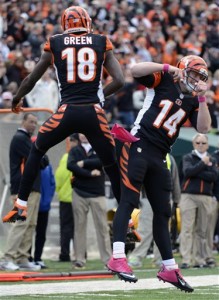The general philosophy is that receiving yards can be re-written using the following formula:
Receiving yards = (Receiving Yards/Target) x (Targets/Team_Pass_Att) x Team_Pass_Att.
Since each of those variables regress to the mean in different ways, we can get a more accurate projection of future receiving yards by projecting each of those three variables than by simply looking at past receiving yards. For example, here are the best fit formulas for each of those metrics:
Future Pass Attempts = 36 + (450 x Pass_Attempts/Play) + (0.255 x Offensive Plays)
Future Percentage of Targets = 6.2% + 71.3% x Past Percentage of Targets
Future Yards/Target = 5.5 + 0.29 x Past Yards/Targets
If you take a look at the three coefficients, the number of offensive plays run from year to year and the yards per target averages are not very sticky; both have coefficients of less than 0.3, which indicates a significant amount of regression to the mean. Meanwhile, percentage of targets is much, much sticker, at 71%. [1]Pass attempts per play can’t be analyzed the same way, at least using the formulas presented here, but it does look as though the pass-heaviness of an offense is moderately sticky, too. And … Continue reading
As a result, this regression really likes players like A.J. Green (5th in receiving yards in 2013, projected to be 1st in 2014), Andre Johnson (7th, 2nd) and Vincent Jackson (14th, 6th). To find out who else this metric likes and dislikes, and for a more thorough analysis, you can read the full article here.
References
| ↑1 | Pass attempts per play can’t be analyzed the same way, at least using the formulas presented here, but it does look as though the pass-heaviness of an offense is moderately sticky, too. And that would be even more true if we accounted for game scripts, I suppose. |
|---|

